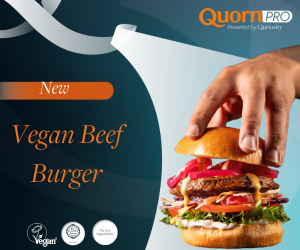The days of the vegetarian lasagne are numbered, not because there is anything wrong with a lasagne made from fresh vegetables. It’s just that it’s become bored, unloved and a bit lazy. It doesn’t exactly excite the imagination or palate. Instead, it sounds like a cheap readymade meal that was bought out of desperation because all of the other shelves were empty! While it’s a dull dinner, other versions of lasagne are fantasised over, they get photographed and put on Instagram. Other versions evoke flavours, textures, aromas that are considerably more fun, more appealing and much more likely to make you swipe right on the meal.
The issue is words like vegetarian, vegan, healthy have connotations of being exclusive. With many thinking “if I’m not a vegan, why would I order the vegan lasagne?” or “I’m not super healthy, so why would I order your healthy bean hotpot?” These words also concentrate our minds on what is absent from the dish — vegetarian lasagne translates as lasagne without the meat for vegetarians only.
The power of words used to describe our menus has been for a long time an underused tool in the fight against climate change and the fight against beige food. Labelling foods as healthy, vegan or vegetarian can actively decrease the likelihood of customers choosing that meal. Removing health-based markers from our menus makes sense in much the same way as removing incomprehensible chef terms. No one wants to google the menu to understand what they are ordering, not only is it annoying for customers but can also lead to a drop in sales.
So, what does leading your menu messaging around flavour look like and how do you start doing it?
Focusing on flavour increases diners’ expectations of a positive taste sensation. By using descriptive words, you can highlight expectations of specific flavours, exciting cooking methods, key ingredients, provenance or cultural heritage. You set the scene for what your customers are going to eat and if they think they will enjoy it.
By describing the taste, look, feel and smell of the food, you are providing a highlight reel of what to expect from the dish. By identifying the key origins of the dish, you are showing the customer how you care about where their food comes from and how it was treated before it arrived.
Celebrate the dishes cultural heritage, even if it’s only your mum’s lemon drizzle — let people know that. It’ll make your mum proud too (always a good thing!) Talk about how the dishes have been treated with love, care and attention throughout the cooking process.
Was it pan-fried, slowly braised for 24 hours, charcoal grilled, seared or smothered in butter? Let people know how you built up the flavour in those humble carrots. Add a little indulgence by describing if it is smothered, creamy, crispy, dollop, juicy, naughty or zingy? Think of your menu description as M&S advert time. Does it follow the latest trend? People love to try things they’ve seen on social media platforms, like TikTok.
However, do your descriptions in moderation, don’t go overboard with it, no one wants to order a “Norfolk Fens, organic, Thai spiced, chargrilled, honey glazed carrots with a slow cooked, crispy edged and creamy centre, Jersey royal potato and Cheshire celeriac terrine with a twist of lime, as seen on MasterChef.” A little bit scattered throughout your menu’s goes a long way.
None of this is new to chefs, we have been writing delicious sounding descriptions for meat-based dishes throughout our careers. It’s just a matter of applying the same enthusiasm and love to vegetables!









